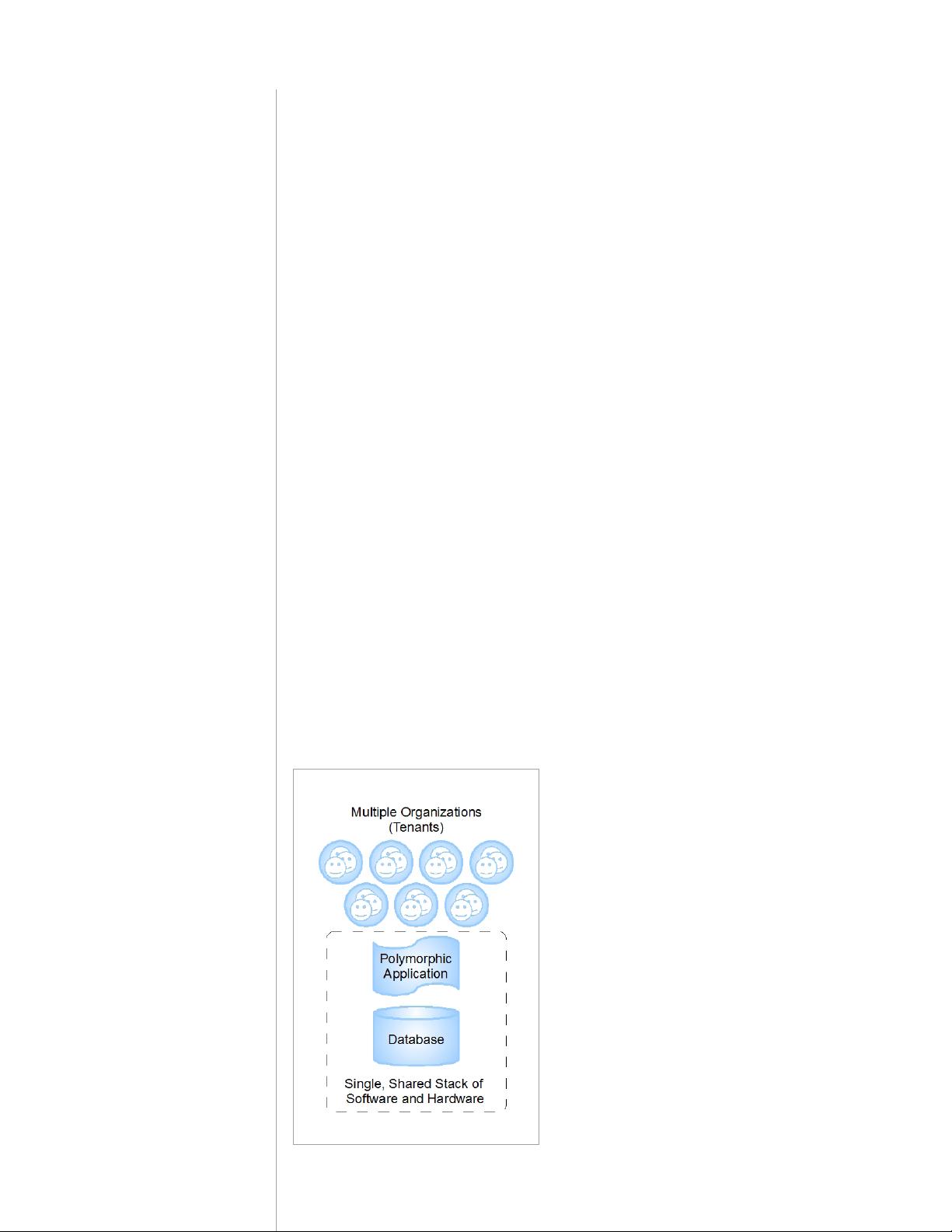
WHITEPAPER
6 Force.com: A Comprehensive Look at the World’s Premier Cloud-Computing Platform
ese customers are not alone. Salesforce.com customers have created more than 100,000 custom
applications on the Force.com platform. And these applications don’t just operate within a Salesforce
CRM environment. By using the Force.com Web services API to integrate these applications with
existing systems, customers are executing more than 100 million Force.com API transactions per day.
Force.com Development vs. Traditional Development
A recent independent analysis of Force.com highlights how much more efficiently businesses can
build and deploy applications in the Force.com cloud than with traditional means. Galorath Inc.
conducted a 20-month study of the Force.com platform to calibrate its SEER cost estimation
tool for the budgeting of Force.com projects. is work led to these conclusions about Force.com
compared to traditional Java-based application development platforms:
Requirements definition time is 25 percent less due to rapid prototyping and the updating of
::
Force.com applications.
e testing effort is at least 10 percent less due to extensive re-use of proven code.
::
Development productivity of new code is five times greater.::
Overall project cost is 30 to 40 percent less.::
Force.com Enabling Technologies
e capabilities and success of the Force.com platform are largely tied to two key enabling
technologies: multitenancy and metadata.
Multitenancy
e origins of today’s emerging utility-computing model stem from the failure of the application
service provider (ASP) model of the 1990s. An ASP delivered a traditional, on-premises
application from its data center to a remote customer over a network, managing all the application’s
operational aspects. e customer was responsible for purchasing and maintaining a conventional
perpetual software license, and the ASP charged a fee for managing the entire process. But the
cost inefficiencies of deploying and maintaining a dedicated hardware and software deployment
for each customer (or tenant) doomed the ASP model to failure. e desire for a utility-based
computing model did not die with ASPs, however; instead, it sparked the innovation that resulted
in a different way of building applications with less expense and overhead that could serve the
needs of many customers.
Modern cloud-based applications are much more cost-efficient than their single-tenant
counterparts, thanks to a new application development
approach that’s at the heart of the Force.com
platform—
multitenancy. A multitenant application can
serve the needs of multiple organizations, or tenants, by
sharing a single physical instance and version of the
application. Tenants using a multitenant service operate
in virtual isolation from one another; Organizations can
use and customize an application as though they each
has its own instance, yet each organization’s data and
customizations remain secure and insulated from the
activity of all other tenants. e single-application
instance effectively morphs at runtime for any particular
tenant at any given time.
Multitenant business applications that rely on Force.com,
such as the extremely successful Salesforce CRM
application, are similar to consumer applications such
as Google Mail that also run a single code base and
depend on an infrastructure shared by all users. It is this
multitenant architecture that makes possible the quick
deployment, low risk, and rapid innovation for which
salesforce.com has become known.









